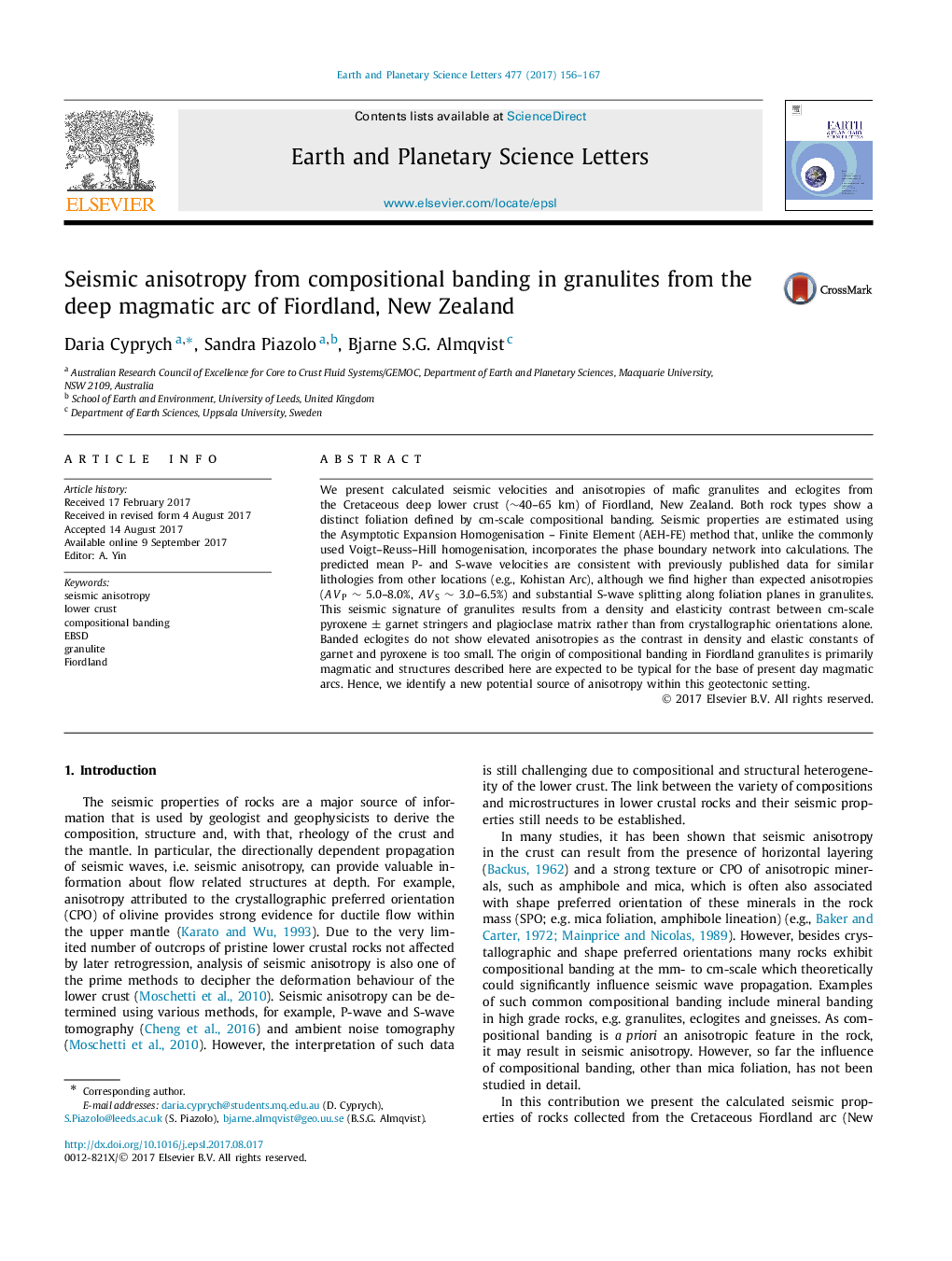| Article ID | Journal | Published Year | Pages | File Type |
|---|---|---|---|---|
| 5779541 | Earth and Planetary Science Letters | 2017 | 12 Pages |
â¢Compositional banding of mafic versus felsic minerals results in seismic anisotropy.â¢Compositional banding of garnet and pyroxene does not produce seismic anisotropy.â¢Spatial arrangement of minerals need to be incorporated in anisotropy calculation.â¢Compositionally banded sequences are a potential source for seismic anisotropy.
We present calculated seismic velocities and anisotropies of mafic granulites and eclogites from the Cretaceous deep lower crust (â¼40-65 km) of Fiordland, New Zealand. Both rock types show a distinct foliation defined by cm-scale compositional banding. Seismic properties are estimated using the Asymptotic Expansion Homogenisation - Finite Element (AEH-FE) method that, unlike the commonly used Voigt-Reuss-Hill homogenisation, incorporates the phase boundary network into calculations. The predicted mean P- and S-wave velocities are consistent with previously published data for similar lithologies from other locations (e.g., Kohistan Arc), although we find higher than expected anisotropies (AVP â¼ 5.0-8.0%, AVS â¼ 3.0-6.5%) and substantial S-wave splitting along foliation planes in granulites. This seismic signature of granulites results from a density and elasticity contrast between cm-scale pyroxene ± garnet stringers and plagioclase matrix rather than from crystallographic orientations alone. Banded eclogites do not show elevated anisotropies as the contrast in density and elastic constants of garnet and pyroxene is too small. The origin of compositional banding in Fiordland granulites is primarily magmatic and structures described here are expected to be typical for the base of present day magmatic arcs. Hence, we identify a new potential source of anisotropy within this geotectonic setting.
